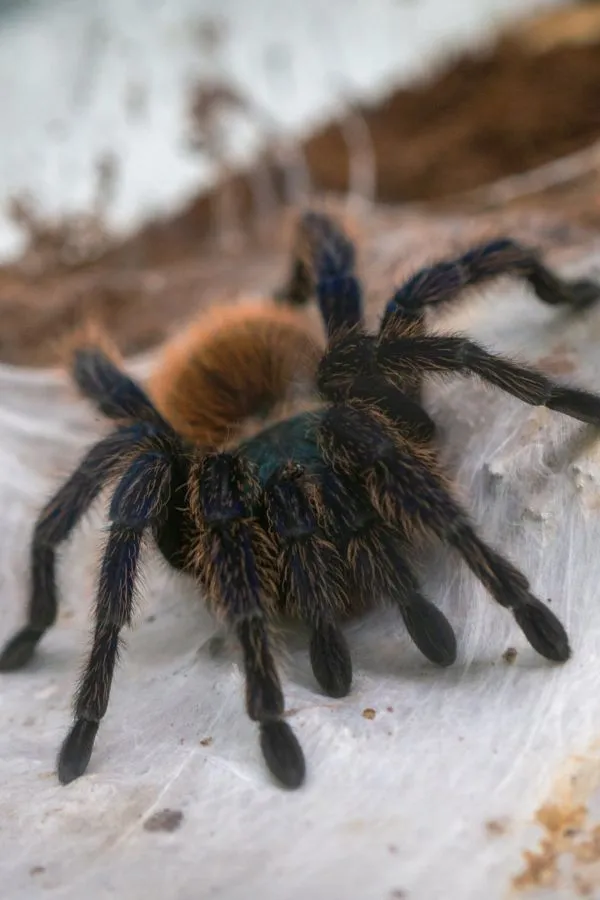Understanding the Green Bottle Blue Tarantula (GBB)
The Green Bottle Blue Tarantula, or Chromatopelma cyaneopubescens, is a stunning and popular tarantula species native to the coastal regions of Venezuela. Known for its vibrant coloration and relatively docile temperament, the GBB has become a favorite among tarantula enthusiasts of all experience levels. Their striking appearance, featuring a metallic blue carapace, green legs, and a vibrant orange abdomen, sets them apart from many other tarantula species. Understanding the GBB’s natural habitat and behaviors is crucial for providing proper care and ensuring a healthy, thriving pet. This guide will provide you with the essential knowledge needed to successfully care for your own Green Bottle Blue Tarantula, covering everything from enclosure setup and feeding to health maintenance and breeding considerations. This introduction sets the stage for a comprehensive exploration of GBB care, providing a roadmap for responsible pet ownership.
GBB Tarantula Appearance and Behavior
The Green Bottle Blue Tarantula earns its name from its incredible coloration. Adults display a metallic blue carapace, vibrant green legs, and a bright orange abdomen, creating a visually stunning contrast. These colors become more pronounced as the tarantula matures. Beyond their striking appearance, GBBs are known for their relatively docile temperament, making them suitable for intermediate keepers. They are not typically aggressive but can exhibit defensive behaviors if they feel threatened, such as flicking urticating hairs from their abdomen. Observing your GBB’s behavior can provide insights into its well-being. Active tarantulas that readily eat and explore their enclosures are generally healthy. Conversely, a tarantula that refuses food or hides constantly may be experiencing stress or health issues. Always approach your GBB with caution and respect its space to avoid any potential defensive reactions.
Setting Up the Perfect GBB Enclosure
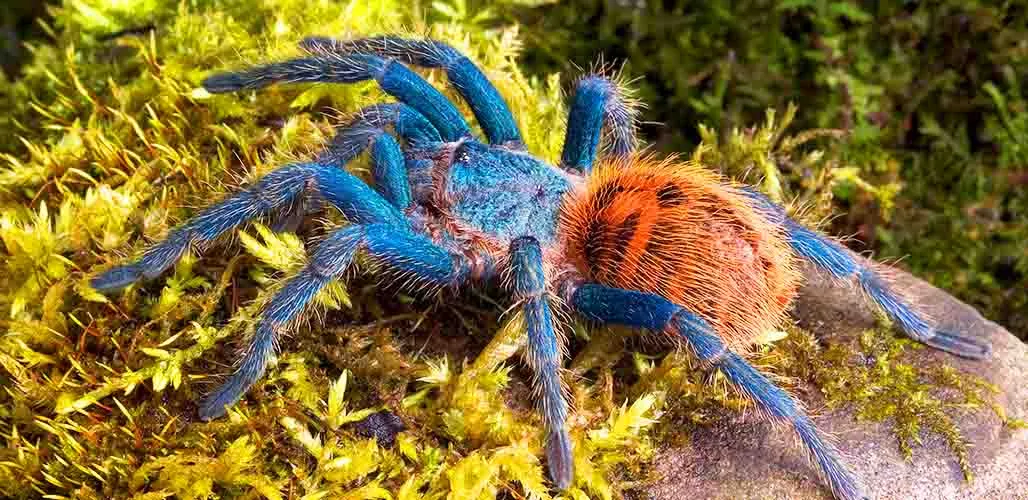
Creating the ideal environment is paramount to the health and happiness of your Green Bottle Blue Tarantula. The enclosure should mimic their natural habitat, providing ample space, appropriate temperature and humidity levels, and a sense of security. Avoid placing the enclosure in direct sunlight, as this can overheat the habitat. A secure lid is also essential to prevent escapes. The right setup not only ensures the tarantula’s physical well-being but also reduces stress, contributing to its overall longevity and quality of life. This section will help you set up a proper enclosure.
Enclosure Size and Substrate
A suitable enclosure should be appropriately sized for your GBB, allowing for sufficient space to move around and establish a comfortable burrow or web. A 10-gallon aquarium or a similar-sized terrarium is generally sufficient for an adult. The enclosure should be taller rather than wider, as GBBs are known for their arboreal tendencies, often webbing high up in their enclosures. The substrate is another key component of the enclosure. A mixture of peat moss, vermiculite, and a bit of coco fiber provides good drainage, retains moisture, and allows the tarantula to burrow or web. Avoid substrates like sand or gravel, as they don’t retain moisture well and can be difficult for the tarantula to navigate. The depth of the substrate should be about 2-3 inches to facilitate burrowing. Regular cleaning and maintenance are important to keep the enclosure clean and prevent the buildup of harmful bacteria.
Temperature and Humidity Levels
GBBs thrive in temperatures between 75°F and 85°F (24°C and 29°C). A heat source, like a low-wattage heat mat or a ceramic heat emitter, can be used to maintain a consistent temperature, but always avoid placing the heat source directly under the enclosure. Monitor the temperature with a reliable thermometer to ensure it stays within the appropriate range. Humidity is also a critical factor in GBB care, ideally maintained between 60% and 70%. Achieve this by misting the enclosure with dechlorinated water a few times a week, allowing the substrate to slightly dampen. Avoid over-misting, which can lead to mold growth. Ventilation is also essential, ensure there is sufficient airflow by providing cross-ventilation in the enclosure. Regularly check the humidity levels with a hygrometer to make sure everything is well.
GBB Tarantula Diet and Feeding
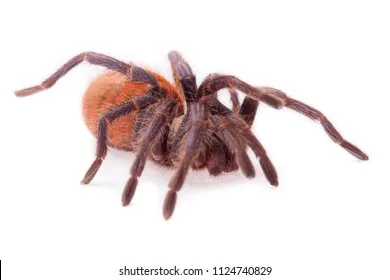
Proper nutrition is essential for the health, growth, and overall well-being of your Green Bottle Blue Tarantula. GBBs are voracious eaters, but it’s important to provide them with a varied and appropriate diet. Understanding their dietary needs and feeding habits is crucial for successful tarantula care. Overfeeding can lead to health problems, while underfeeding can hinder growth and potentially shorten their lifespan. This part will show how to feed your GBB in the proper way.
Choosing the Right Food
The primary food source for GBBs should consist of insects. Crickets, mealworms, and dubia roaches are all excellent choices. The size of the insects should be appropriate for the tarantula’s size; the insect should generally be no larger than the tarantula’s abdomen. It is also beneficial to provide a variety of insects to ensure a balanced diet. Prior to feeding, gut-load the insects with nutritious foods, such as vegetables and insect food, to enhance their nutritional value. Avoid feeding wild-caught insects, as they may contain parasites or pesticides that can harm your tarantula. Remove any uneaten insects within 24 hours to prevent them from bothering or potentially injuring the tarantula. Supplement the insect diet with occasional treats like pre-killed small lizards, but these should be provided in moderation.
Feeding Frequency and Amounts
The feeding frequency for a Green Bottle Blue Tarantula varies depending on its age. Spiderlings and juveniles should be fed two to three times a week, while adults can be fed once or twice a week. Observe your tarantula’s feeding behavior and adjust the frequency as needed. A healthy GBB will readily consume its food. If the tarantula refuses food for an extended period, it may be preparing to molt or experiencing stress. Remove the uneaten food to avoid any risk of injury to the tarantula. When a tarantula is in pre-molt, it is common for them to stop eating. Always provide a shallow water dish with fresh water. The amount of food should be appropriate for the tarantula’s size and appetite. Avoid overfeeding. The abdomen should not appear overly distended.
GBB Tarantula Health and Handling
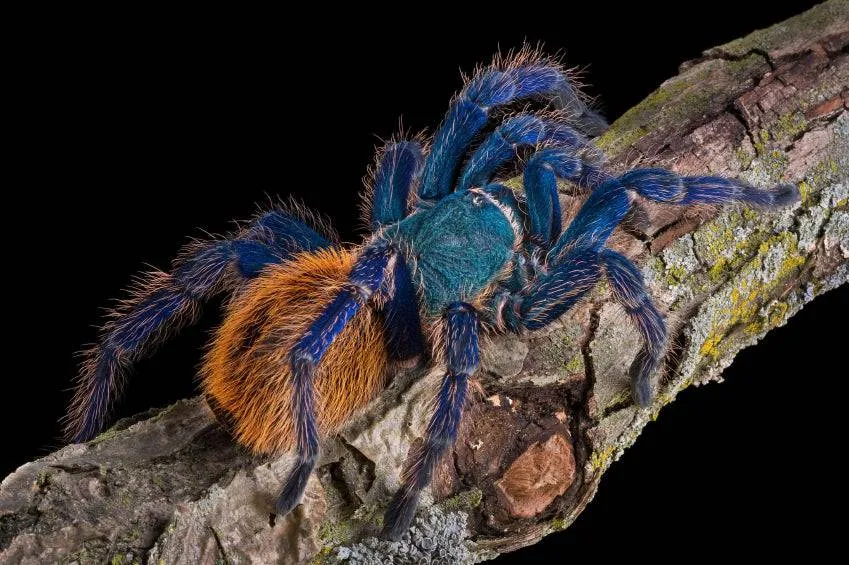
Maintaining the health of your Green Bottle Blue Tarantula requires careful observation and preventative care. Recognizing potential health issues early and practicing safe handling techniques are essential aspects of responsible tarantula ownership. Regular monitoring of your GBB’s behavior, eating habits, and overall appearance can help you quickly identify any problems. This will ensure your tarantula lives a long and happy life.
Recognizing Common Health Issues
Several health issues can affect GBBs. One of the most common problems is dehydration, often caused by insufficient humidity or a lack of access to fresh water. Symptoms include a wrinkled abdomen and lethargy. Another health issue is parasites, which can be introduced through live prey. The tarantula may display loss of appetite, lethargy, and even vomiting. Respiratory infections are another possible health concern and are typically caused by poor enclosure conditions and too much humidity. They manifest as difficulty breathing and lethargy. If you suspect your GBB is ill, observe your tarantula’s behavior. Immediately isolate a sick tarantula from the others, and consult with a veterinarian experienced in exotic pets. Prompt intervention can make a difference.
Safe Handling Practices
Handling a Green Bottle Blue Tarantula is generally not recommended, as they can be easily stressed. Excessive handling can also increase the risk of injury. If handling is absolutely necessary, always approach the tarantula slowly and carefully. Use a soft brush to gently guide the tarantula into a secure container. Avoid sudden movements or dropping the tarantula. GBBs can flick urticating hairs if they feel threatened, causing skin irritation. Always wash your hands thoroughly after handling the tarantula or working in its enclosure. Provide a safe environment by ensuring the enclosure is secure. A secure environment is one that reduces potential stressors.
GBB Tarantula: Shedding and Molting
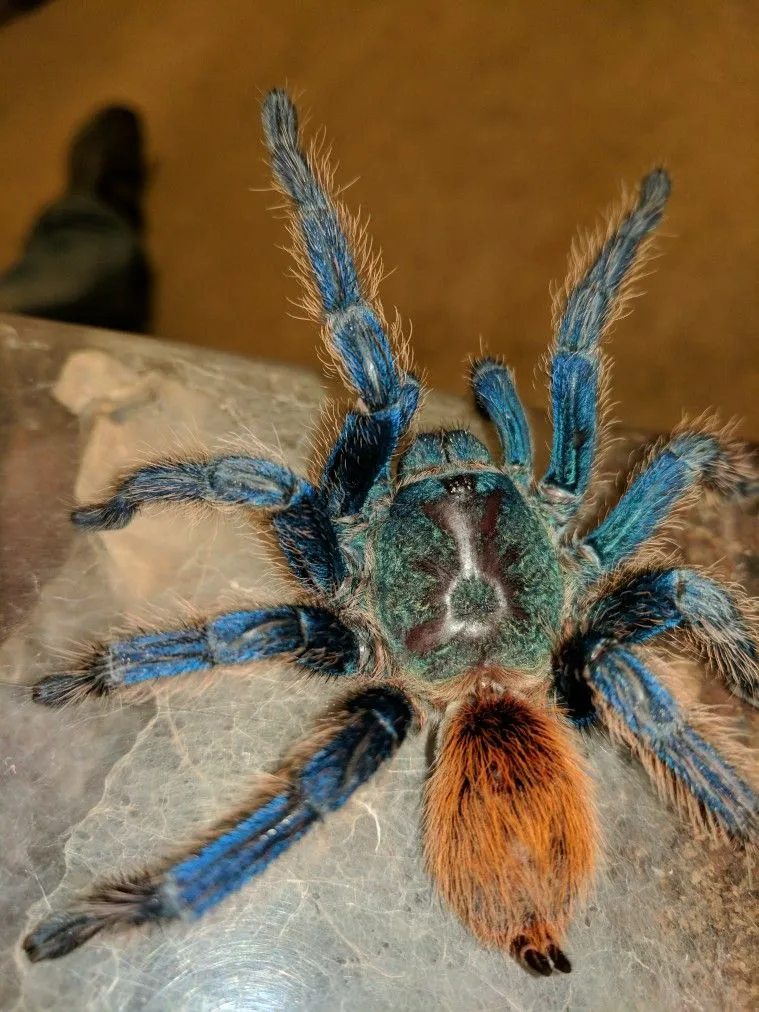
Molting is a natural and essential process for tarantulas, allowing them to grow and replace damaged body parts. Understanding the molting process and how to provide proper care during this time is crucial for your GBB’s well-being. The shedding process is a fascinating and important part of the tarantula’s life cycle.
The Molting Process
As a tarantula grows, it outgrows its exoskeleton. Molting is the process by which the tarantula sheds its old exoskeleton and reveals a new, larger one. Before molting, the GBB may become less active and stop eating. The abdomen may darken, and the tarantula may start to build a web mat to protect itself. The molting process can take anywhere from a few hours to a day or more, depending on the tarantula’s size and age. During molting, the tarantula lies on its back, and its exoskeleton splits open. The tarantula then pulls itself out of the old exoskeleton, revealing its new, softer one.
What to Do After Molting
After molting, the tarantula’s new exoskeleton is soft and vulnerable. Do not disturb the tarantula for several days until the exoskeleton hardens. Provide fresh water and allow the tarantula to rest. The tarantula will typically begin eating again within a week or two after molting. Do not feed the tarantula too soon after molting, as its fangs will still be soft. The molted exoskeleton is a complete shed of the tarantula. The old exoskeleton can provide valuable information, such as the tarantula’s sex and any potential health issues. The molt should be kept in case of any further need.
GBB Tarantula: Breeding and Reproduction
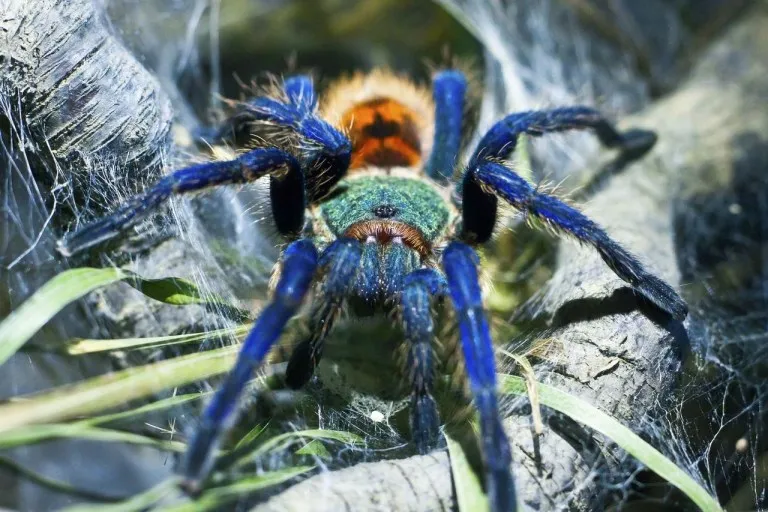
Breeding Green Bottle Blue Tarantulas can be a rewarding experience for experienced keepers. It requires careful planning and an understanding of the species’ mating behaviors. The process involves several steps, from sexing the tarantulas to creating the ideal conditions for mating and egg sac production. Keep in mind that breeding tarantulas requires a significant commitment of time and resources, so only experienced keepers should consider it.
Identifying Male and Female Tarantulas
Sexing a GBB is essential before attempting to breed. The most reliable method is to examine the molt. Males will have specialized structures called pedipalps, and the females will not have those. Use a magnifying glass to examine the molted skin of the tarantulas. If you are unsure about the sex, consult with an experienced breeder or tarantula specialist for assistance. The size and maturity of the tarantulas are also important factors. Male tarantulas typically reach maturity faster than females and they are smaller. The female tarantulas need to be mature to lay eggs.
GBB Tarantula: Where to Buy
When acquiring a Green Bottle Blue Tarantula, it is crucial to purchase it from a reputable source. This helps to ensure that the tarantula is healthy, properly identified, and ethically sourced. The seller’s reputation is key. Research breeders or pet stores thoroughly before making a purchase. Buying from a reliable source minimizes the risk of acquiring a sick tarantula or a misidentified species. Consider whether you are buying online or locally.
Finding a Reputable Breeder
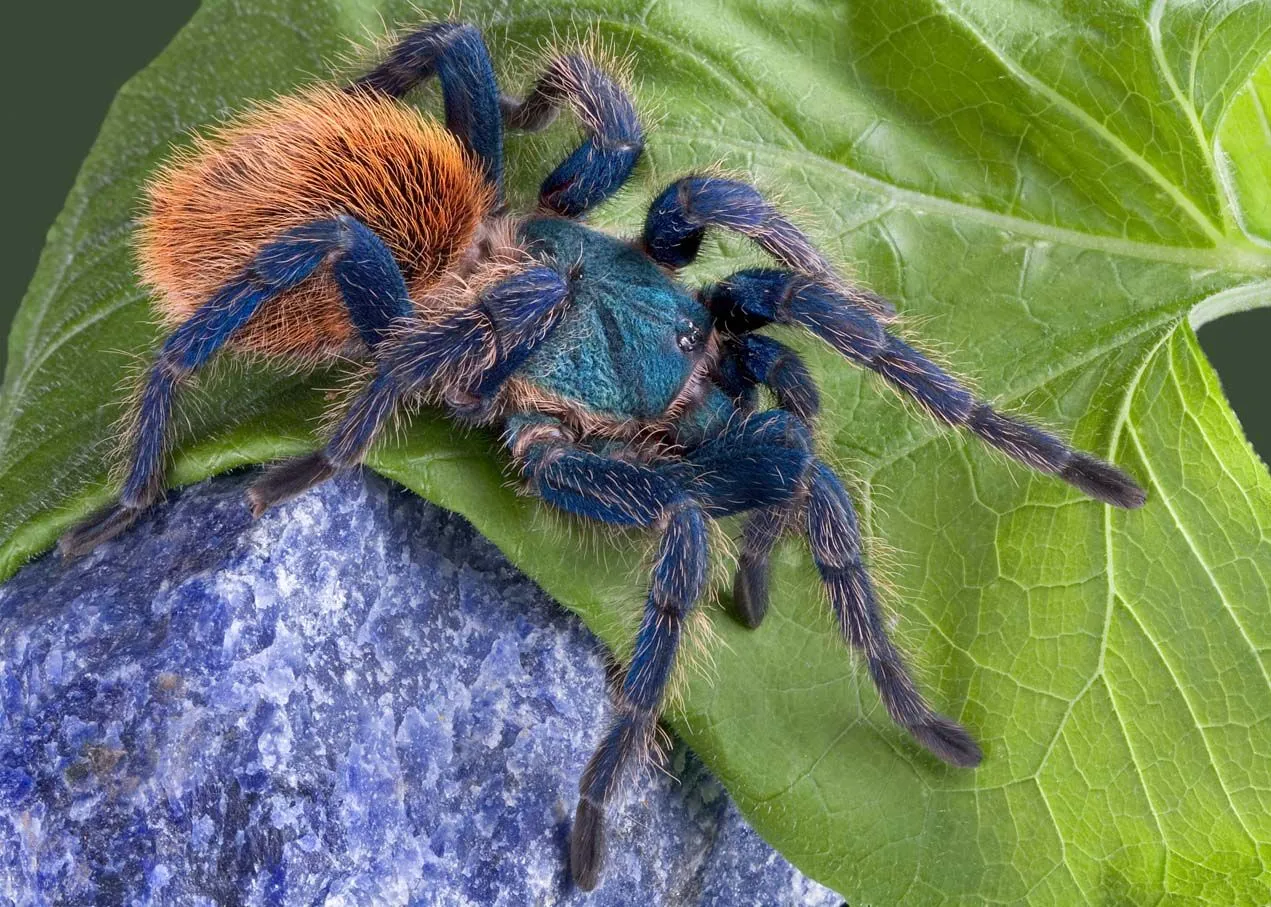
A reputable breeder will have a solid reputation and will be knowledgeable about tarantula care. Check online reviews and forums to find feedback from previous customers. Ask about the breeder’s husbandry practices, the tarantula’s origin, and any guarantees offered. A responsible breeder will be transparent and willing to answer your questions. Before purchasing, inspect the tarantula carefully. Look for signs of health and activity. Avoid any tarantula that appears lethargic, underweight, or shows signs of illness.
GBB Tarantula: Frequently Asked Questions
Caring for a Green Bottle Blue Tarantula may come with a variety of questions, especially for new owners. Addressing these frequently asked questions can provide you with essential information to help you. Learning from other owners can also help you. Here are some of the most commonly asked questions to help you get started.
- How long do Green Bottle Blue Tarantulas live? They typically live for 10-15 years.
- Are Green Bottle Blue Tarantulas venomous? Yes, but their venom is generally not considered medically significant to humans.
- How often should I clean the enclosure? Spot-clean the enclosure weekly and completely replace the substrate every 6-12 months.
- Can I handle my GBB? It is generally not recommended to handle GBBs due to their defensive nature and the potential for injury.
- What do I do if my tarantula stops eating? Check the enclosure conditions and ensure the tarantula is not about to molt.
Caring for a Green Bottle Blue Tarantula is a rewarding experience. By following this guide, you can provide your GBB with the care it needs to thrive. Remember to research and learn more. Enjoy the captivating world of these amazing creatures!
